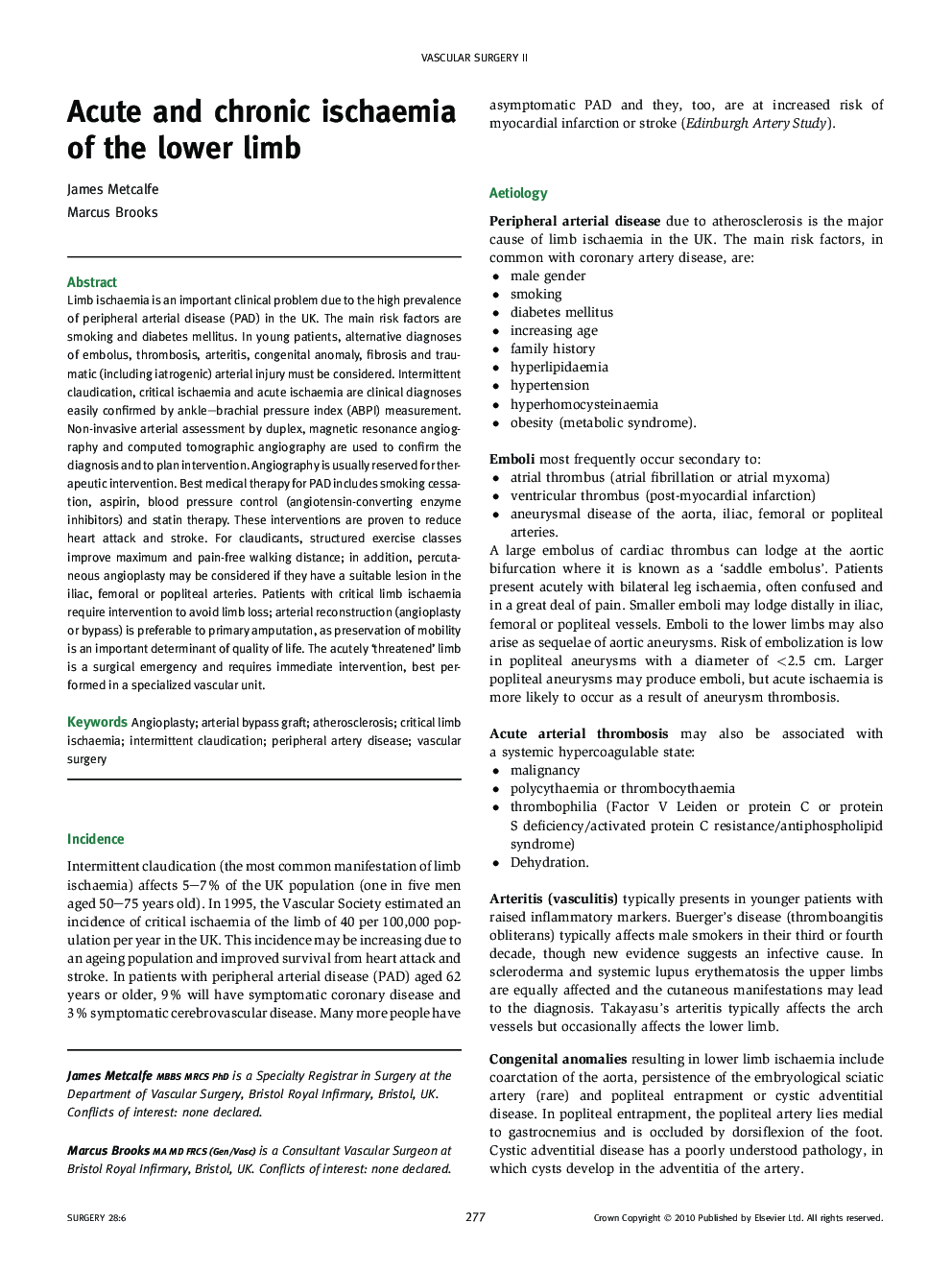| کد مقاله | کد نشریه | سال انتشار | مقاله انگلیسی | نسخه تمام متن |
|---|---|---|---|---|
| 3839113 | 1247767 | 2010 | 7 صفحه PDF | دانلود رایگان |

Limb ischaemia is an important clinical problem due to the high prevalence of peripheral arterial disease (PAD) in the UK. The main risk factors are smoking and diabetes mellitus. In young patients, alternative diagnoses of embolus, thrombosis, arteritis, congenital anomaly, fibrosis and traumatic (including iatrogenic) arterial injury must be considered. Intermittent claudication, critical ischaemia and acute ischaemia are clinical diagnoses easily confirmed by ankle–brachial pressure index (ABPI) measurement. Non-invasive arterial assessment by duplex, magnetic resonance angiography and computed tomographic angiography are used to confirm the diagnosis and to plan intervention. Angiography is usually reserved for therapeutic intervention. Best medical therapy for PAD includes smoking cessation, aspirin, blood pressure control (angiotensin-converting enzyme inhibitors) and statin therapy. These interventions are proven to reduce heart attack and stroke. For claudicants, structured exercise classes improve maximum and pain-free walking distance; in addition, percutaneous angioplasty may be considered if they have a suitable lesion in the iliac, femoral or popliteal arteries. Patients with critical limb ischaemia require intervention to avoid limb loss; arterial reconstruction (angioplasty or bypass) is preferable to primary amputation, as preservation of mobility is an important determinant of quality of life. The acutely ‘threatened’ limb is a surgical emergency and requires immediate intervention, best performed in a specialized vascular unit.
Journal: Surgery (Oxford) - Volume 28, Issue 6, June 2010, Pages 277–283